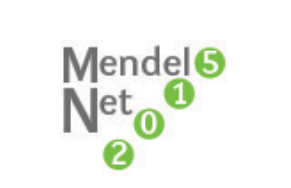I think as more stringent emissions are implemented that there won't be solely engines that rely on EGR or SCR. Newer engines will require both systems to meet the next tier of off-road emissions.
For yet to be implemented TIER 5 emissions one would need both: The legislators have found that SCR only engines, for example FPT which uses up to 5 injections per stroke, emit very few grammes of soot per Kw/h, yet the particles are so fine that the same grammes have a lot more particles, which can penetrate lungs much deeper than bigger ones, they say.
Nature is full of similar dust, so if you ask me, the legislative civil servants are creating job security for themself by inventing further legislation based on new ideas.... Another reason why i vote against the Ukraine deal in the Dutch referendum at april 6th, and why i hope Nigel Farrage will succeed in his campaign to get England to elect itself out of the EUSSR... But thats another story

Deere and Caterpillar have been successful in their EGR pursuits, so far. In fact, Deere has had much an entire marketing campaign trumpeting its "single fluid system."
Well, success.... They did get their engines homologated but thats all... I have worked with Deere TIER 3B OEM engines professionally, and i wouldnt call a clogged up VGT (meaning a 3000 euro rebuild) cracked EGR cooler, and a host of other EGR related engine failures that came standard within the first 3000hrs a success... As far as Caterpillar, there is a reason they withdrew from the on-road engine market... And they sell yellow painted FPT SCR-only engines as marine engines, for high power yachts. With 30% EGR it simply wasnt possible to push enough fresh air into a 6.7 liter engine to push 450hp for powerboats. FPT managed that just fine.
As for Cummins, Cummins didnt want to sell us a 6.7 liter engine for wheel loader application above 225hp, because the transient response time of the engine wasnt fast enough to be shuttling forward and reverse all day, and get the engine up to speed to get enough oil flow to lift the bucket when loading trucks, fast enough. Deere could guarantee that performance, yet only with two turbos, a valve in the exhaust to generate backpressure, and a valve in the intake. A very complex system, operating with exhaust gas with lots of soot in it (a direct effect of the incomplete, cold, low NoX burn) so very vulnerable.
They claim their new Tier 4 engines use less DEF than competitors. I do think they rely less on SCR to achieve the emissions limits than Agco and FPT.
That is correct, they use less DEF (or AdBlue in Europe) than FPT. But Sisu is doing pretty good in overall fluid consumption, using no DPF, but EGR, DOC and SCR.
Using EGR on an engine with clean combustion technology (higher NoX but little soot) is much more reliable because the EGR system doesnt make the engine eat its own shit all day.
Another difference between North America and Europe is that in Europe Diesel is 1.5 the price of DEF, and in North America DEF is 1.5 the price of Diesel. That gives a difference in outcome of the total fluid consumption equasion.



